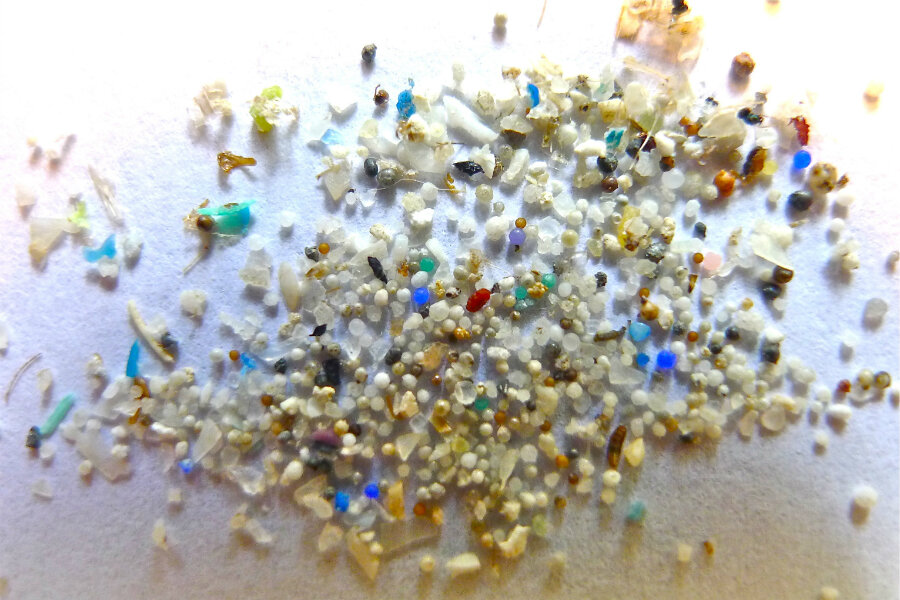Is your face wash damaging the oceans?
Loading...
Tiny but powerful forces are invading our seas, and your daily hygiene regimen is likely implicated.
Scientists and conservation advocates are now calling for the ban of microbeads – small pieces of plastic found in toothpaste, body scrub, face wash, and other 'exfoliating' cosmetics. The problems arise when microbeads are flushed down the drain, as they’re designed to be, and end up in aquatic habitats. Because they only measure up to one millimeter in size, wastewater treatment plants aren’t able to screen them.
As a result, about 8 trillion microbeads per day are entering rivers, lakes, and oceans. According the press release for a recent study on the spread and effects of the miniscule culprits, that’s enough to cover 300 tennis courts each day. But this figure doesn’t account for the 99 percent of all microbeads that end up in sewage sludge and can also eventually enter streams and oceans.
Fish and other marine species are likely to mistake the microbeads for food, and when these small animals fall prey to bigger ones, the microbeads make their way up the food chain. Because of the chemicals used in the manufacturing process, as well as pollutants absorbed by the microbeads in water, the tiny plastic specks are toxic to consume. Other scientists have found that microbeads can clog the digestive systems of coral, eventually starving them to death.
“Part of this problem can now start with brushing your teeth in the morning,” says OSU biologist Stephanie Green, an author of the study titled "Scientific Evidence Supports a Ban on Microbeads"
“Contaminants like these microbeads are not something our wastewater treatment plants were built to handle, and the overall amount of contamination is huge," she said. "The microbeads are very durable.”
The microbeads take a very long time to break down and, because of their size, they are difficult to clean up. Although they comprise only a sliver of the microplastic problem in oceans, their direct access into natural waters make them a special concern. According to the study, microplastic has been found in an array of animals, including turtles and seabirds. Ingestion can lead to digestive tract wounds, inflammation, liver toxicity, and even cellular necrosis.
But microbeads can be easily controlled, scientists say. Nontoxic and biodegradable alternatives exist, and some companies have already committed to limiting the use of microbeads. Unilever and Johnson & Johnson have pledged to phase them out altogether.
“We argue that the scientific evidence regarding microplastic supports legislation calling for a removal of plastic microbeads from personal care products,” says University of California Davis fellow Chelsea Rochman, a lead author of the study.
Illinois became the first state to prohibit the production, manufacture, and sale of products that contain plastic microbeads in June of 2014. Since then, Connecticut, New Jersey, and Colorado have also enacted regulations or bans.
Proposed policy from the study would be a thorough and comprehensive ban on microbeads, including wording that would close up current loopholes. For instance, some legislations fail to specify a degree of biodegradability, under which microbeads don’t have to be fully biodegradable.
“We’re facing a plastic crisis and don’t even know it,” Green says.
But as the study concludes, “the solution to this problem is simple.”





